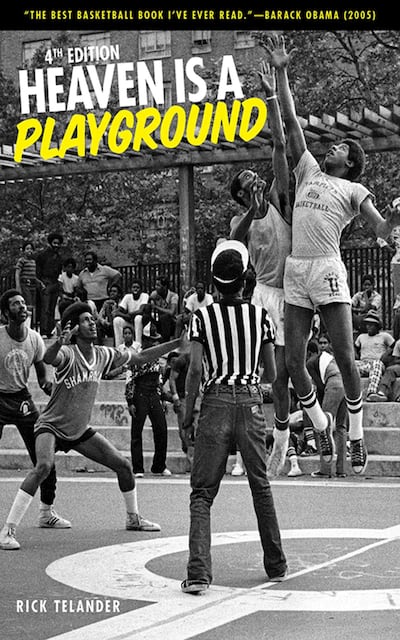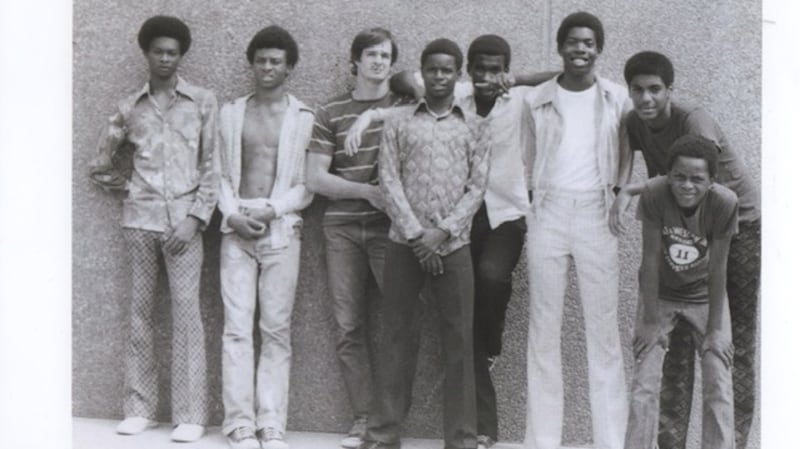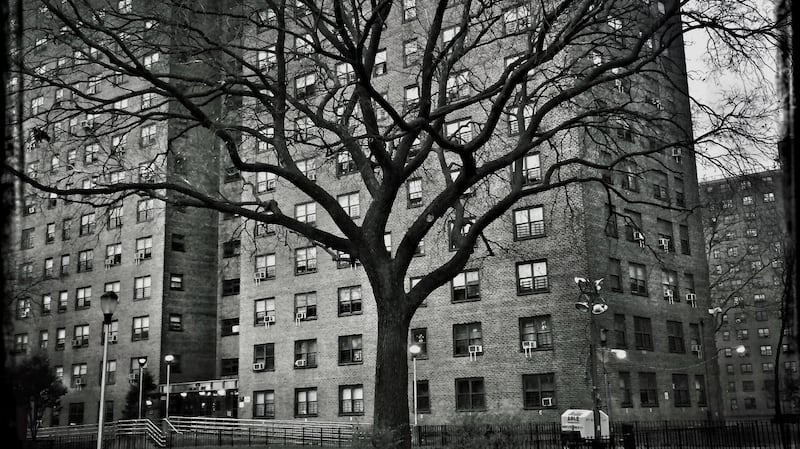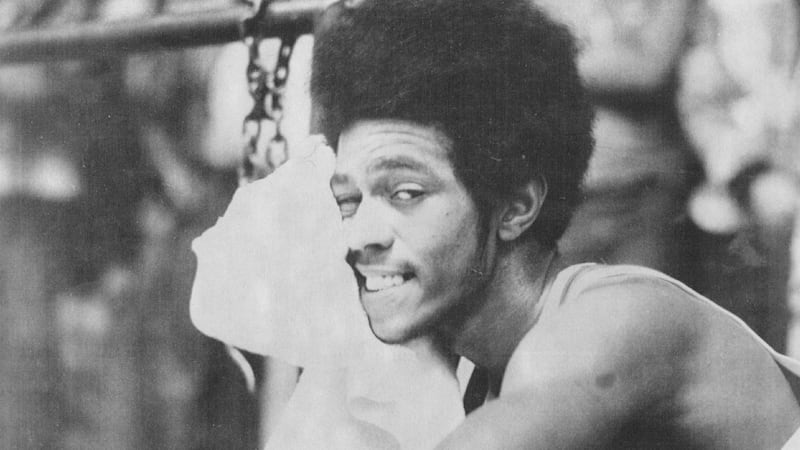"That's a question I've been struggling with for 45 years," Rick Telander admits now when asked what he was chasing after that summer, when he appeared in an antic and demoralised section of New York with a vague idea. It was 1974, the year that Robert Redford's version of Gatsby hit the screens as a near parody of a New York edging towards bankruptcy.
Telander arrived in Brownsville a de-facto alien, trying to ignore his own staggering whiteness, armed with note books, a primitive voice recorder and a vague idea to write a book about the obscure fame of the Brooklyn street basketball players whose interpretation of the game thrilled him. The premise was based on danger and trust in equal measure.

"What was I doing? I think it was some sort of self-fulfilment or search," he says from his home in Chicago. "I was just as lost in many ways as the people I was writing about. What do they know that I don't? And that was also mixed in with my deep love of sport and basketball. And I think I had a bit of foresight of how the game was going to go because there were these great black athletes who were doing things with the ball that ponderous white athletes never dreamed of doing. And I had a love of human adventure, too. Beyond that it was a wild stab in the dark."
He slept in a sleeping bag on the floor in the home of Winston Karim all summer. He used the toilet lid as a table on which to write his notes - the place had yet to be furnished. He became the reluctant coach of the 'Subway Stars', trying with mixed success to shepherd the individual moods and impulses of a group of likeable and challenged young men into something resembling a team structure.

He ate sparingly and from the local stores. And he played. They played ball through fetid heat waves and lush rain storms and late into the night.
And as he listened and took notes, Telander managed to bottle a moment and a mood in a book that stands now much as a sociological wonder as it is a story about basketball. It was the summer when a 14-year-old named Albert King began to display the unstoppable prowess that led to national NBA fame and when a moody, sinewy wraith named Fly Williams, possessed a streaking, airborne game that meant he was one of the best teenage players in America and had it all.
But none of these youngsters had much of an idea about what ‘America’ was beyond their immediate streets. There’s a very funny passage where Telander terrifies his would-be street punks by showing them a male stag beetle and an equally poignant moment where he tries to show them a constellation but can’t because of the choked city sky.
Telander grew up as a relatively privileged Illinoisan who studied English and was sufficiently talented at college football in Northwestern that he was drafted to the NFL by the Kansas City Chiefs.
“But in football, I saw guys getting really badly hurt. When I was playing people went straight for your head with their helmet. And deep inside, I didn’t want to play that thing anymore. What I really wanted to be was a writer.”
A piece he wrote on his football life led to 14 years with the imperious Sports Illustrated magazine. In 1973, he had chased a story to Brooklyn trying to find the elusive Fly Williams. He couldn’t shake what he witnessed during that brief visit and without fully understanding why found himself returning the following summer with his loose plan for a book.
In the opening section, 'May', Telander describes walking around the corner of Foster and Nostrand at dusk along the garbage-strewn street past men sitting on car trunks drinking out of paper bags towards Foster Park where, against his better judgement, he is inveigled into playing a game of five-on-five by Rodney Parker, the big hearted scheming fixer and self-appointed guidance counsellor.
The local authorities had removed the overhead lights the previous year to stop local kids from playing right through the night. So it was hard for him to even see the ball and instead Telander submitted himself to a sensory overload; voices all about him - “Boom! She go boom”, “His body just come like this”, “Nullify that shit” and the sensation of players jumping over his head.
Anytime he got the ball, he quickly passed but he took time to absorb his surroundings: “The Vandermeer project rises on our left like a dark red embattlement against the sky, TV’s flickering deep within like synchronized candles. The complex covers part of four city blocks and houses nearly 10,000 people, a small American town. At one time - no more than 10 years ago - the Vandermeer was totally white.”

In the pages, Telander traces the hopes of a few unforgettable characters within this community at a precious stage in their lives. They are still young enough to have optimism. Against a backdrop of violence and disappearances and shootings, there is laughter and high jinks and actual plans to better themselves through basketball.
Racism
“But the NBA and college basketball was still very, very white then. Colleges were just beginning to recruit black players. Racism was - and is - just massive in this country. It is so ingrained in all of us. It just is.”
Two years passed before the book was published. He found his title in a line from GK Chesterton: ‘Earth is a taskgarden: heaven is playground.’
The publishers wanted to change it. “And it was the one time in my life I didn’t assume someone knew better than me,” he laughs. It hit the bookshelves to initial bafflement. Why would anyone go ‘in’ there to write about ‘those’ kids? Nobody knew what to make of it.
In truth, the project was a trailblazer, presaging the wildly successful documentary Hoop Dreams (1994) and future basketball books like The Last Shot as a concept. It was a slow burner: a cult book, appearing and disappearing from print until Fireside publishing revived it in 1988 with a postscript which set the story of that summer against the passage of time.
A film was made in 1991: Michael Jordan was initially contracted to play the star but by the time production started, he had gone stratospheric.
But the power of the book grew through the succeeding years. It's no secret that Fly Williams' brilliance never found its way onto an NBA court. Or that Music Smith, one of the more beautiful souls in the book, was stabbed to death in some class of drugs row. Or that the silky Danny Odums died young from a heart attack. Over the decades, Telander has stayed in touch with the group.

“We keep talking about having a reunion,” he says.
But: time and distance and life. The courts are still in place in Foster Park but the brownstone buildings which he probably could have bought for a couple of thousand dollars in 1974 now sell for several million. The profile of the area has flipped again. He last saw Fly Williams just before the pandemic when he visited him in the state penitentiary in Attica.
“He has two years left on an eight year sentence. He is unbelievable. So many guys had died and Fly has been shot, oh, possibly five times. When the Nets moved to Brooklyn, he was introduced to the crowd at half time. And he showed me all the pellet shots in his chest that day. And he looked terrible then but he looked pretty good in prison. He’d put on some weight. I said to him that I was worried about him and he said: “Man, I ain’t gonna die in no prison. My mom lived to be 92! He’s Fly, you know. Sort of carefree and such a survivor.”
The story of New York urban basketball is laden with shadow gods like Pee Wee Kirkland and Earl Manigault who couldn't transfer their light-sabre game to the rules and regulations world. Williams is another of that band.
“He might say: don’t do what I don’t do. But he doesn’t look back with any great sadness or chagrin. I think he understands that he was who he was and did what he did.”
Telander left Sports Illustrated to come home to Chicago as a columnist with the Sun-Times and has written several other powerful books. The social and racial upheaval provoked by the Trump era revived in his mind again the disastrous concept of those high-rise buildings overlooking Foster Park where he spent that summer.
“Just a social disaster. They were essentially very localised and efficient prisons, in a way. And you could see it during Trump’s reign that slavery, 400 years later, is something we are still paying the price for in this country. If you are isolated from trees, soil, nature, stars - and you see this with technology now - well, that separation comes with a great price.”
Telander was one of the first to shine a light on the actuality of the black lives he portrayed in Heaven Is A Playground. It took decades before the mainstream understood its significance. The young ball players are deep in middle age now but their story remains vital and relevant and the book a classic.
“It’s funny, when I could have used the accolades, there were none,” Telander laughs. “That book, it follows me, I’m proud of it. It was something I did when I was 25. I look back on it and I kind of remember the young man who wrote it.
“I know that if I was to write it now it would probably be done entirely differently. And one thing I notice is that I never talked to any parents - or wanted to meet them. I was still basically a kid myself. It is a snapshot of a time and a culture within a sport.”











